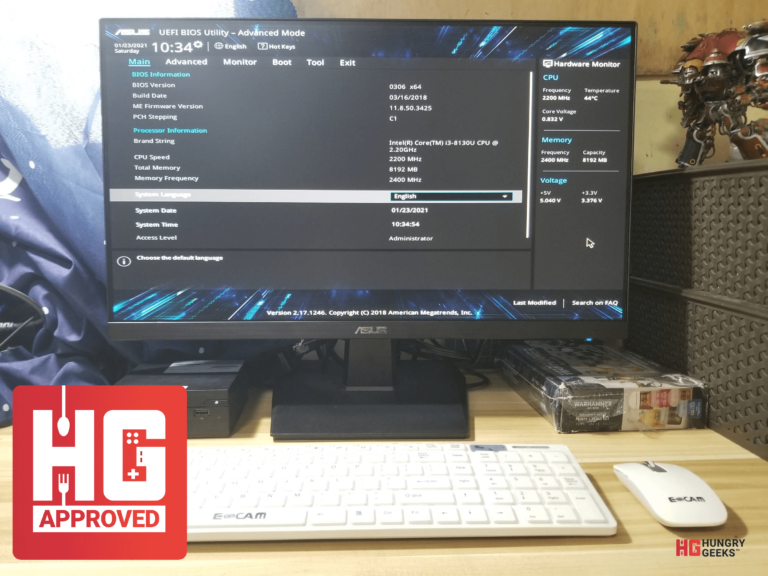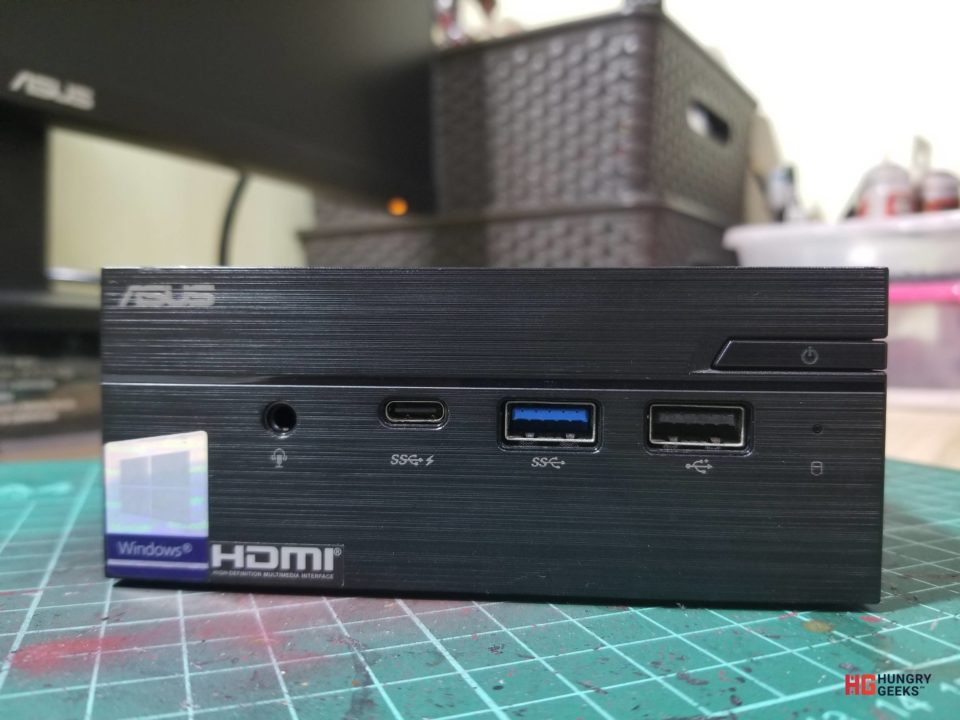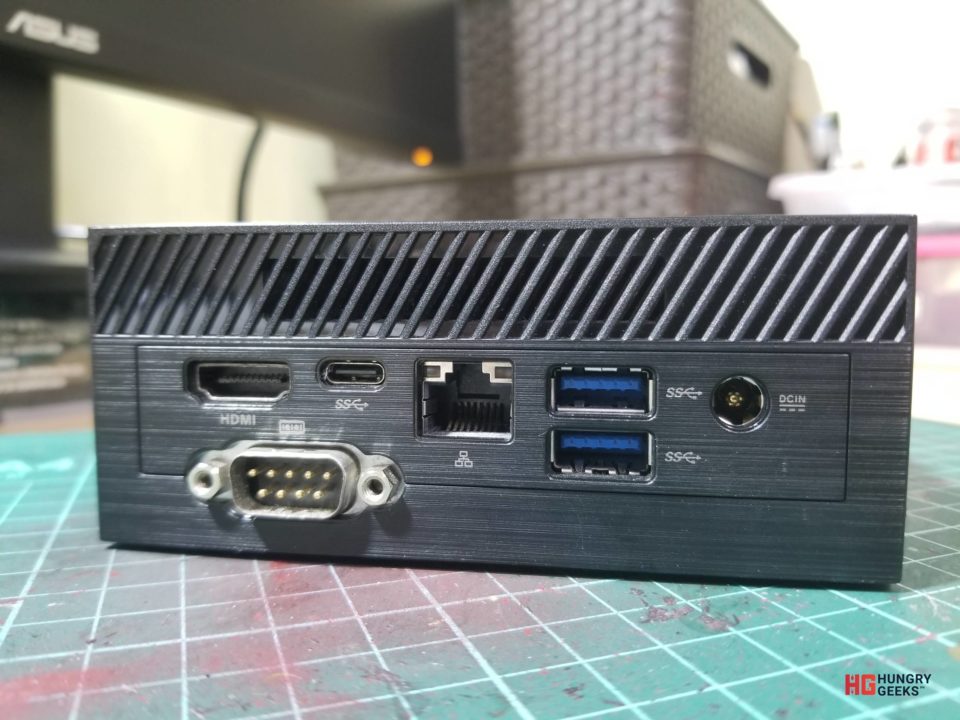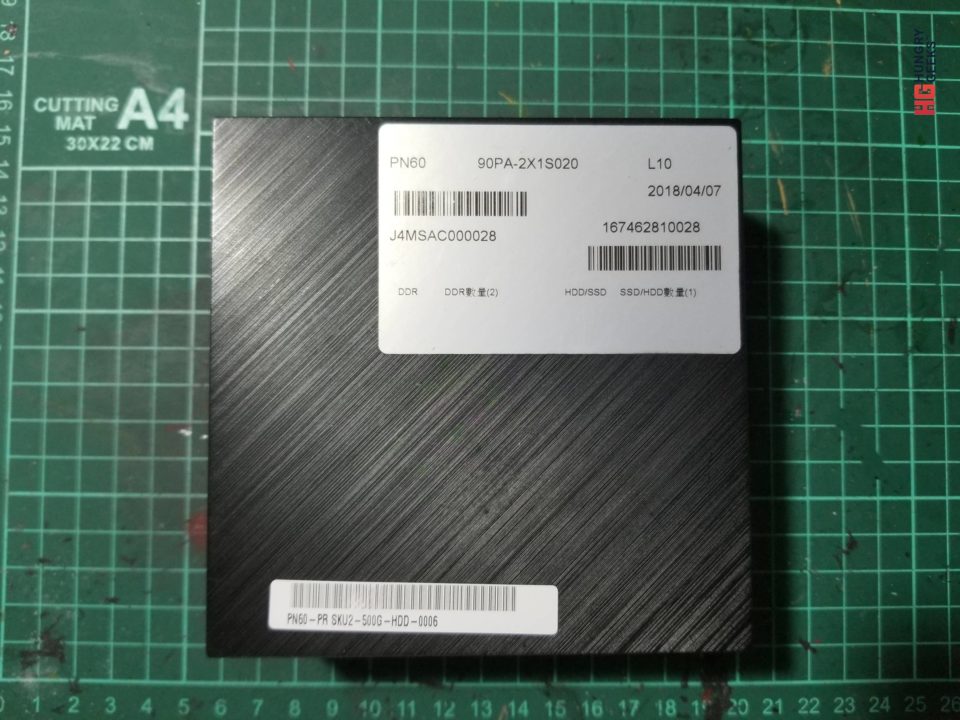
With most of us locked inside the confines of our homes, computers are now considered as essential to “normalize” life. With work and study being on top of our desks inside our rooms, it is definitely a good investment to have a machine simply dedicated for productivity. Better if the said machine does not occupy a large space and looks clean without too much flare. A fitting device is the the ASUS PN60, together with its monitor buddy, the ASUS VA24EHE. Both came to us for review and we thought, “hey we could use this”. And use we did.
| CPU | Intel Core i5-8130U 2.2Ghz |
| Memory | 8GB Up to 32GB; DDR4 at 2400MHz |
| Storage | 1TB 2.5″ HDD |
| Operating System | Windows 10 |
| Dimensions: | 115 x 115 x 49 mm (WxDxH) |
| Weight: | 0.7 kg |
The PN60 that we had for review is powered by an Intel i3-8130U, a mobile processor. While not as powerful as its non-U counterpart, the Intel i3-8130U still boasts incredible performance while having a whopping 15W TDP power consumption (sarcasm, by the way).
As with the specs shown above, the PN60 is tiny enough to fit an adult’s hand. It is also very light, weighing only 0.7 kg with an SSD.

The front is home to the Audio Jack (input and output), a USB-C, USB 3.0, and a USB 2.0. The power button can also be found here.

The rear is home to the HDMI port, a lone USB-C, RJ-45 for wired connections, 2 USB 3.0s, and the power port


 ASUS PN60 Ports
ASUS PN60 PortsThe PN60 is home to a number of ports that is likely to be more than enough for your usual needs. It has 3 USB 3.0 ports, a USB 2.0 port, and 2 USB-C ports. For output, it only supports HDMI. For connection, it is Wi-Fi 802.11ac compatible and can also support wired connections with its sole RJ45 slot.
 The ASUS PN60 can easily be opened by just unscrewing 4 of its corner screws, then sliding the top off. Together with the lid is the system’s storage which you can upgrade further down the line. Once the lid is removed, you can easily access the RAM sticks (SODIMM) and the wireless network module, both of which can be upgraded.
The ASUS PN60 can easily be opened by just unscrewing 4 of its corner screws, then sliding the top off. Together with the lid is the system’s storage which you can upgrade further down the line. Once the lid is removed, you can easily access the RAM sticks (SODIMM) and the wireless network module, both of which can be upgraded.
 Although you get a full computer with the package, it still is a good point that you can easily upgrade your system if you want. Feel that the RAM is inadequate? Buy new ones and slap them in. Storage is lacking? Get another one. The whole upgrade process is very easy and it doesn’t need that much technical know how.
Although you get a full computer with the package, it still is a good point that you can easily upgrade your system if you want. Feel that the RAM is inadequate? Buy new ones and slap them in. Storage is lacking? Get another one. The whole upgrade process is very easy and it doesn’t need that much technical know how.
| Panel Size | Wide Screen 23.8″ (60.5c,) 16:9 |
| Panel Type | IPS |
| True Resolution | 1920×1080 |
| Response Time | 5ms |
| Refresh Rate(max) | 75Hz |
| Flicker free | Yes |
| Low Blue Light | Yes |
| FreeSync Supported | Yes |
| Adaptive-Sync Supported | Yes |
| I/O Ports | HDMI, D-Sub, DVI-D |
| VESA Wall Mounting | 100x100mm |
| Frameless Design | Yes |
The ASUS VA24EHE is a decent 24-inch monitor that is FreeSync compatible with 75Hz of refresh rate. It may not be a gaming monitor, but it can exceed the usual standard of 60Hz. Plus, you get ASUS features such as bluelight filters, Quick Fit, and Game Plus.
There’s not much to say about the ASUS VA24EHE. It’s already an excellent monitor on its own. Complete and without any fuss. It’s almost bordlerless and has a 75Hz refresh rate. In general, this is a pretty solid unit.
Also, setting this thing up is basically just slotting in the base, the neck, and the screen part. Incredibly easy to assemble. Perfect with the ASUS PN60.
Cinebench leverages the same powerful 3D engine found in the award-winning animation software Cinema 4D Release 20 to accurately evaluate CPU rendering performance capabilities across various systems and platforms.
 Novabench is a free benchmark tool that allows you to see your computer’s overall performance. Its tests CPU, GPU, RAM, and Storage speeds, and gives you an aggregate score that you can use for comparison with other similar setups.
Novabench is a free benchmark tool that allows you to see your computer’s overall performance. Its tests CPU, GPU, RAM, and Storage speeds, and gives you an aggregate score that you can use for comparison with other similar setups.
 PassMark measures CPU, 2D & 3D GPU, Memory, and Disk speeds. Similar to Novabench, it gives you an aggregate score, giving you an idea on how your PC performs and how it ranks when compared to other computers around the world.
PassMark measures CPU, 2D & 3D GPU, Memory, and Disk speeds. Similar to Novabench, it gives you an aggregate score, giving you an idea on how your PC performs and how it ranks when compared to other computers around the world.
The ASUS PN60 won’t break any records, that is definitely a given. But it is more than enough for usual tasks like internet browsing, typing, and online meetings.
Given its specifications, I did not try playing on the ASUS PN60. The only thing close to a game that I ran on it was the Nox Android emulator. I played a couple of mobile games on it and while it did run, it wasn’t particularly mind-blowingingly smooth. While playing, I also experienced a couple of hiccups that weren’t game breaking but are otherwise noticeable.

 The ASUS PN60 is a small work machine that is more than enough to cater to your work/study from home needs. It sports a decent processor partnered with ample memory for productivity. It is small, can easily be carried around, and can be hidden well enough for a clean-looking desk.
The ASUS PN60 is a small work machine that is more than enough to cater to your work/study from home needs. It sports a decent processor partnered with ample memory for productivity. It is small, can easily be carried around, and can be hidden well enough for a clean-looking desk.
In terms of future-proofing, it can be easily upgraded to suit your needs should you wish for more performance in the long run. You only need to unscrew 4 screws, slide it out, then you’re good to go to upgrade it. However, note that the small form factor does limit what you can do compared to bigger systems.
In short, the ASUS PN60 is a very compact computer that’s upgradeable and mobile.
 For the ASUS VA24EHE, there’s nothing but praises to be heaped. It’s surprising how far we’ve come to have 75Hz, almost borderless monitors to be the norm. If you’re looking for some affordable monitor that’s easy to assemble, has a couple of good features, and can also be used in some light gaming, then the ASUS VA24EHE is something to consider.
For the ASUS VA24EHE, there’s nothing but praises to be heaped. It’s surprising how far we’ve come to have 75Hz, almost borderless monitors to be the norm. If you’re looking for some affordable monitor that’s easy to assemble, has a couple of good features, and can also be used in some light gaming, then the ASUS VA24EHE is something to consider.
The ASUS PN60 and the ASUS VA24EHE are a match made in heaven. Both can give you what you need in terms of productivity.
Fortunately, ASUS is currently offering a packaged deal for both. You can get the ASUS PN60 and the ASUS VA24EHE monitor for PHP 33,400.00 (4GB RAM) or PHP 39,330 (8GB RAM) . For the full list, you can check them out here.
